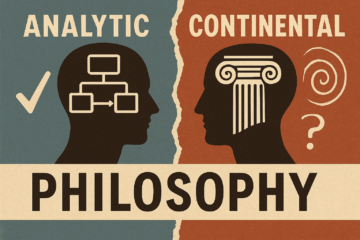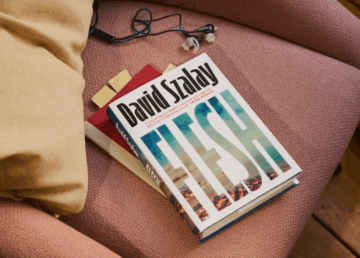Enjoying the content on 3QD? Help keep us going by donating now.
Category: Recommended Reading
Finding A Baudelaire For Our Time
Barry Schwabsky at The Point:
 Everyone agrees that modern poetry in France—and therefore in Europe—starts with Charles Baudelaire. But no one agrees on why. His successors, Arthur Rimbaud and Stéphane Mallarmé, are each in their own way more patently radical, and the same is true of his American contemporary Walt Whitman. How modern do you have to be to be a modern? Compared to their works, those of Baudelaire, despite their sulfurous aroma, are far more traditional; while he was an early adopter of the prose poem, his most influential poetry used received forms. “Baudelaire accomplished what classical prosody had always required, or rather what it had inaugurated. … His prosody has the same spiritual monotony as Racine’s,” Yves Bonnefoy once remarked. And beyond matters of form, some of Baudelaire’s content was familiar too. His exacerbated ambivalence toward his Haitian-born lover Jeanne Duval, the subject of so many of his poems, is as ancient as Catullus’s odi et amo; praise of drunkenness dates back to the Greeks; and his proud sense of damnation, of his “Heart great with rancor and bitter desires,” would have been second-hand news to Lord Byron. Was the “new shudder” that Victor Hugo perceived in Baudelaire’s writing new enough to make him, rather than the last of the Romantics (the one in whose work Romanticism, you might say, curdled), the first of the moderns?
Everyone agrees that modern poetry in France—and therefore in Europe—starts with Charles Baudelaire. But no one agrees on why. His successors, Arthur Rimbaud and Stéphane Mallarmé, are each in their own way more patently radical, and the same is true of his American contemporary Walt Whitman. How modern do you have to be to be a modern? Compared to their works, those of Baudelaire, despite their sulfurous aroma, are far more traditional; while he was an early adopter of the prose poem, his most influential poetry used received forms. “Baudelaire accomplished what classical prosody had always required, or rather what it had inaugurated. … His prosody has the same spiritual monotony as Racine’s,” Yves Bonnefoy once remarked. And beyond matters of form, some of Baudelaire’s content was familiar too. His exacerbated ambivalence toward his Haitian-born lover Jeanne Duval, the subject of so many of his poems, is as ancient as Catullus’s odi et amo; praise of drunkenness dates back to the Greeks; and his proud sense of damnation, of his “Heart great with rancor and bitter desires,” would have been second-hand news to Lord Byron. Was the “new shudder” that Victor Hugo perceived in Baudelaire’s writing new enough to make him, rather than the last of the Romantics (the one in whose work Romanticism, you might say, curdled), the first of the moderns?
more here.
Enjoying the content on 3QD? Help keep us going by donating now.
Coming Back To Nicholas of Cusa
Lawrence Weschler at Wondercabinet:
 Somehow I keep coming back to Nicholas of Cusa, that late medieval Renaissance man (1401-1464), a devout church leader and mathematical mystic who was at the same time one of the founders of modern experimental science—propagator, for example, of some of the first formal experiments in biology (proving that trees somehow absorb nourishment from the air, and that air, for that matter, has weight) and advocate, among other things, of the notion that the earth, far from being the center of the universe, might itself be in motion around the sun (this a good two generations before Copernicus), and yet, for all that, a cautionary skeptic as to the limits of that kind of quantifiable knowledge and thus, likewise, a critic of the then-reigning Aristotelian/Thomistic worldview. No, he would regularly insist, one could never achieve knowledge of God, or, for that matter, of the wholeness of existence, through the systematic accretion of more and more factual knowledge. Picture, he would suggest, an n-sided equilateral polygon nested inside a circle, and now keep adding to the number of its sides: triangle, square, pentagon, hexagon, and so forth. The more sides you added, the closer it might seem that you were getting to the bounding circle—and yet, he insisted, in another sense, the farther away you would in fact be getting. Because a million-sided regular polygon, say, has, precisely, a million sides and a million angles, whereas a circle has none, or maybe at most one.
Somehow I keep coming back to Nicholas of Cusa, that late medieval Renaissance man (1401-1464), a devout church leader and mathematical mystic who was at the same time one of the founders of modern experimental science—propagator, for example, of some of the first formal experiments in biology (proving that trees somehow absorb nourishment from the air, and that air, for that matter, has weight) and advocate, among other things, of the notion that the earth, far from being the center of the universe, might itself be in motion around the sun (this a good two generations before Copernicus), and yet, for all that, a cautionary skeptic as to the limits of that kind of quantifiable knowledge and thus, likewise, a critic of the then-reigning Aristotelian/Thomistic worldview. No, he would regularly insist, one could never achieve knowledge of God, or, for that matter, of the wholeness of existence, through the systematic accretion of more and more factual knowledge. Picture, he would suggest, an n-sided equilateral polygon nested inside a circle, and now keep adding to the number of its sides: triangle, square, pentagon, hexagon, and so forth. The more sides you added, the closer it might seem that you were getting to the bounding circle—and yet, he insisted, in another sense, the farther away you would in fact be getting. Because a million-sided regular polygon, say, has, precisely, a million sides and a million angles, whereas a circle has none, or maybe at most one.
more here.
Enjoying the content on 3QD? Help keep us going by donating now.
Friday Poem
Saudade
A thousand years ago a song was sung
near a campfire at night
by a singer who was alone, exiled
perhaps, or seeking;
a song whose words were not meant
to be understood, only to be heard,
offered to the silence
and sung in the key of loss.
It confirmed the universe is empty
and dark and knows nothing of us.
Of what we offer, life takes what it wants
and goes.
Exhausted with living
we all listen for a sound
we don’t expect to hear.
A thousand years ago a singer
tended the last coals of a fire and sang
the most beautiful song ever sung,
which no one heard,
and it is the song I need now.
by Robert Rice
from Rattle #89, Fall 2025
Enjoying the content on 3QD? Help keep us going by donating now.
Want to live a long, healthy life? 6 secrets from Japan’s oldest people
From The World Economic Forum:
 On the sub-tropical Japanese islands of Okinawa, they have a saying: Live far enough away from your family so you’re not running into them every day, but close enough to take them a warm bowl of soup – on foot. Many of us during the past 18 months would have benefited from living within walking distance of our family. We’ve had to make do with Zoom calls instead – and the loss of social connection has affected our well-being and mental health.
On the sub-tropical Japanese islands of Okinawa, they have a saying: Live far enough away from your family so you’re not running into them every day, but close enough to take them a warm bowl of soup – on foot. Many of us during the past 18 months would have benefited from living within walking distance of our family. We’ve had to make do with Zoom calls instead – and the loss of social connection has affected our well-being and mental health.
Socializing is one of the reasons many Okinawans live healthily to 100 and older. So says University of Hawaii geriatrician and Director of the Kuakini Center for Translational Research on Aging, Dr. Bradley Willcox, who with his anthropologist twin brother, Craig, of Okinawa International University, has been studying centenarians on the islands for more than 20 years. It’s one of the world’s five Blue Zones, where there are high concentrations of centenarians.
More here.
Enjoying the content on 3QD? Help keep us going by donating now.
Jane Goodall’s last interview Recorded on 9/23/25
Enjoying the content on 3QD? Help keep us going by donating now.
Thursday, November 13, 2025
Philosophy’s long-running civil war heats up a bit
Matt Lutz at Humean Being:
 Within the broader discipline of philosophy, there is a split between what is called “analytic philosophy” and what is called “continental philosophy.” The gulf between these two camps is wide, and the dispute between them extremely acrimonious, although it is hard to articulate precisely what the difference between the two is. Any proposed account of this distinction – analytic philosophers are like this, while continentals are like that – will inevitably result in very angry objections. For one thing, any proposed distinction will inevitably mischaracterize several paradigmatic continental or analytic philosophers. But more importantly, the person proposing the distinction is usually a partisan of one camp or the other, and they characterize the distinction in terms that are extremely flattering to their own side. “Analytic philosophers prize rigor and clarity,” says that analytic philosopher, “whereas continentals do not.” “Go fuck yourself,” the continental philosopher replies.
Within the broader discipline of philosophy, there is a split between what is called “analytic philosophy” and what is called “continental philosophy.” The gulf between these two camps is wide, and the dispute between them extremely acrimonious, although it is hard to articulate precisely what the difference between the two is. Any proposed account of this distinction – analytic philosophers are like this, while continentals are like that – will inevitably result in very angry objections. For one thing, any proposed distinction will inevitably mischaracterize several paradigmatic continental or analytic philosophers. But more importantly, the person proposing the distinction is usually a partisan of one camp or the other, and they characterize the distinction in terms that are extremely flattering to their own side. “Analytic philosophers prize rigor and clarity,” says that analytic philosopher, “whereas continentals do not.” “Go fuck yourself,” the continental philosopher replies.
Despite the difficulty with giving a strict characterization, analytic philosophy and continental philosophy have very different vibes.
More here.
Enjoying the content on 3QD? Help keep us going by donating now.
Rats Are Snatching Bats Out of the Air and Eating Them—and Researchers Got It on Video
Sarah Kuta at Smithsonian Magazine:
 Rats have gotten a bad reputation over the years for being dirty, garbage-eating carriers of disease. But these ubiquitous rodents are also clever and capable of learning complex tasks, even using their imaginations to navigate in virtual reality.
Rats have gotten a bad reputation over the years for being dirty, garbage-eating carriers of disease. But these ubiquitous rodents are also clever and capable of learning complex tasks, even using their imaginations to navigate in virtual reality.
Now, new research adds another odd skill to their résumés: hunting bats. In a new study published in the journal Global Ecology and Conservation, scientists describe the first-ever observations of brown rats snatching bats out of the air, then chowing down.
The novel behavior is a “remarkable” example of the rodents’ ability to make the most of their environment, the researchers write.
But it may also spell bad news: The two species could be exchanging pathogens—interactions that could eventually trickle down to affect human health—and the rats, which are not native to Germany, might be killing enough bats to harm the local populations.
More here.
Enjoying the content on 3QD? Help keep us going by donating now.
Joni Mitchell – Live at the Newport Folk Festival 2022
Enjoying the content on 3QD? Help keep us going by donating now.
Grant Sanderson: Why Laplace transforms are so useful
Enjoying the content on 3QD? Help keep us going by donating now.
Notes On Joni Mitchell
Rick Moody at Salamgundi:

1. The day on which we embarked to see Joni Mitchell play the Hollywood Bowl in Los Angeles (“we” defined as myself, my wife Laurel Nakadate, and our son Theo), having flown west from Boston, was the date of my own parents’ wedding anniversary, namely, October 19.
2. My parents had been divorced since, I think, 1971, or 53 years, on the occasion of the concert. I still think of them on October 19.
3. Is not divorce, any divorce, on the list of “petty wars” that the Joni Mitchell narrator of “Traveller (Hejira)” describes in that bit of song ravishment? (I’m using the demo/early version here.)
4. There are things I find keenly uncomfortable about Los Angeles. I like to walk, but L.A., because of its scale, requires a lot of driving. A constancy of highway transit, yes. A city of travelers.
more here.
Enjoying the content on 3QD? Help keep us going by donating now.
Modeling the geopolitics of AI development
Alex Amadori, Gabriel Alfour, Andrea Miotti, and Eva Behrens at AI Scenarios:
We model national strategies and geopolitical outcomes under differing assumptions about AI development. We put particular focus on scenarios with rapid progress that enables highly automated AI R&D and provides substantial military capabilities.
Under non-cooperative assumptions—concretely, if international coordination mechanisms capable of preventing the development of dangerous AI capabilities are not established—superpowers are likely to engage in a race for AI systems offering an overwhelming strategic advantage over all other actors.
If such systems prove feasible, this dynamic leads to one of three outcomes:
- One superpower achieves an unchallengeable global dominance;
- Trailing superpowers facing imminent defeat launch a preventive or preemptive attack, sparking conflict among major powers;
- Loss-of-control of powerful AI systems leads to catastrophic outcomes such as human extinction.
Middle powers, lacking both the muscle to compete in an AI race and to deter AI development through unilateral pressure, find their security entirely dependent on factors outside their control: a superpower must prevail in the race without triggering devastating conflict, successfully navigate loss-of-control risks, and subsequently respect the middle power’s sovereignty despite possessing overwhelming power to do otherwise.
More here.
Enjoying the content on 3QD? Help keep us going by donating now.
Giorgio Agamben And “Inoperativity”
Adam Kirsch at the NYRB:
 In 2004 the Italian philosopher Giorgio Agamben was scheduled to spend the spring semester as a visiting professor at NYU. On January 5 of that year, however, the Department of Homeland Security launched a new program to collect fingerprints from foreign visitors. Though EU citizens were exempted, three days later Agamben announced that “personally, I have no intention of submitting myself to such procedures,” and he refused to come to the US. In a statement first published in La Repubblica, he warned that collecting fingerprints marked a new “threshold in the control and manipulation of bodies”—what Michel Foucault had named “biopolitics.” Agamben described fingerprint collection as a perfect example of this tyranny over bodies and called it “biopolitical tattooing,” analogous to the tattooing of numbers on prisoners’ arms at Auschwitz.
In 2004 the Italian philosopher Giorgio Agamben was scheduled to spend the spring semester as a visiting professor at NYU. On January 5 of that year, however, the Department of Homeland Security launched a new program to collect fingerprints from foreign visitors. Though EU citizens were exempted, three days later Agamben announced that “personally, I have no intention of submitting myself to such procedures,” and he refused to come to the US. In a statement first published in La Repubblica, he warned that collecting fingerprints marked a new “threshold in the control and manipulation of bodies”—what Michel Foucault had named “biopolitics.” Agamben described fingerprint collection as a perfect example of this tyranny over bodies and called it “biopolitical tattooing,” analogous to the tattooing of numbers on prisoners’ arms at Auschwitz.
Born in Rome in 1942, Agamben began his career in the 1970s and 1980s as what Adam Kotsko, who has translated many of his books into English, calls “a hermetic aesthetic thinker” mainly interested in problems of language. But starting with the publication of his book Homo Sacer in 1995 he became, Kotsko writes, “one of the foremost political minds of our era.” In nine densely argued and dizzyingly erudite books published over the next two decades, Agamben investigated the concepts of law, sovereignty, and power in the Western political tradition.
more here.
Enjoying the content on 3QD? Help keep us going by donating now.
Thursday Poem
Lanterns
The summer we placed my mother in the psychiatric hospital,
the July sunlight spray-painted itself as glare along the building’s walls
as we drove away. I peered out the back window while our father
told us that our mother’s thoughts had strayed deep into the woods
and had lost their way, though the doctors had lanterns to help her
find her way back out. Years later, I imagined my mother was a mystic,
that her fever dreams that summer were whispering deeper truths,
that the mechanical thump of her heart was a secret numerology.
She told me once she was grateful for the lights of the nightly stars,
that they were trying to be gardens. And she told me once that
the years were like fingertips brushing lightly across the surface
of some imagined drum, and that naming something was forever
a way of sending it into exile, banishing it to its own separate sphere,
landlocked and lonely. And once—after our father divorced her—
he described how, in his childhood summers in Michigan’s
Upper Peninsula, turkey vultures with blood-red heads had circled
above the roadkill as he rode his bike to school, as though
a death watch were a form of sleepy hypnosis. Not one of us, I think,
is fully part of this world but lives inside the body’s ossuary.
We are three parts dreaming and two parts disappointment.
I remember listening to an argument once between my father
and my brother about statutes of limitations over his treatment
of our mother. That was maybe a year before his death,
and our father grew quieter and more patient than usual
while a blur of morning light fell through the windows
and transformed one half of his body into a smudge of photons,
the words pummeling him into something almost incorporeal.
My mother had once claimed she’d been wintering all her life,
and I remembered her standing one January in our backyard,
coatless in the snow, in bare feet, huddling her arms
around her body like a junco motionless on a power line,
gazing toward the bright bruise of sun.
by Doug Ramspeck
from Rattle Magazine
Enjoying the content on 3QD? Help keep us going by donating now.
David Szalay’s ‘Flesh’ Wins 2025 Booker Prize
Alex Marshall in The Guardian:
 When David Szalay’s novel “All That Man Is” was nominated for the 2016 Booker Prize, the author described the award ceremony as “a horrible experience.” He sat through a “very stressful” dinner, wondering whether his book would triumph, only for it to lose to Paul Beatty’s “The Sellout.” He later told The Guardian newspaper, “Only trauma imprints memories that clearly.”
When David Szalay’s novel “All That Man Is” was nominated for the 2016 Booker Prize, the author described the award ceremony as “a horrible experience.” He sat through a “very stressful” dinner, wondering whether his book would triumph, only for it to lose to Paul Beatty’s “The Sellout.” He later told The Guardian newspaper, “Only trauma imprints memories that clearly.”
On Monday night in London, Szalay sat through another Booker Prize dinner. But this time his latest novel, “Flesh,” won the prestigious literary award. The author Roddy Doyle, who chaired this year’s judging panel, called it a “singular” and “extraordinary” novel. “It’s just not like any other book,” Doyle told a news conference before Monday’s announcement about the novel, in which Istvan, a lonely Hungarian teenager, makes an unexpected rise to the height of British society. The sparseness of Szalay’s writing compels readers to “climb into the novel and be involved,” Doyle added.
More here.
Enjoying the content on 3QD? Help keep us going by donating now.
Humans Didn’t Invent Mathematics, It’s What the World Is Made Of
Sam Baron in The Singularity Hub:
 Bees in hives produce hexagonal honeycomb. Why? According to the “honeycomb conjecture” in mathematics, hexagons are the most efficient shape for tiling the plane. If you want to fully cover a surface using tiles of a uniform shape and size while keeping the total length of the perimeter to a minimum, hexagons are the shape to use. Charles Darwin reasoned that bees have evolved to use this shape because it produces the largest cells to store honey for the smallest input of energy to produce wax. The honeycomb conjecture was first proposed in ancient times, but was only proved in 1999 by mathematician Thomas Hales.
Bees in hives produce hexagonal honeycomb. Why? According to the “honeycomb conjecture” in mathematics, hexagons are the most efficient shape for tiling the plane. If you want to fully cover a surface using tiles of a uniform shape and size while keeping the total length of the perimeter to a minimum, hexagons are the shape to use. Charles Darwin reasoned that bees have evolved to use this shape because it produces the largest cells to store honey for the smallest input of energy to produce wax. The honeycomb conjecture was first proposed in ancient times, but was only proved in 1999 by mathematician Thomas Hales.
Here’s another example. There are two subspecies of North American periodical cicadas that live most of their lives in the ground. Then, every 13 or 17 years (depending on the subspecies), the cicadas emerge in great swarms for a period of around two weeks. Why is it 13 and 17 years? Why not 12 and 14? Or 16 and 18? One explanation appeals to the fact that 13 and 17 are prime numbers. Imagine the cicadas have a range of predators that also spend most of their lives in the ground. The cicadas need to come out of the ground when their predators are lying dormant.
More here.
Enjoying the content on 3QD? Help keep us going by donating now.
Wednesday, November 12, 2025
‘Flesh’ wins 2025 Booker Prize: ‘We had never read anything quite like it’
Andrew Limbong at NPR:
 István isn’t one of the most talkative characters in literary fiction. He says “yeah” and “okay” a lot, and is mostly reactive to the world around him. But that quietness covers up a tumultuous life — from Hungary to England, from poverty to being in close contact with the super-rich.
István isn’t one of the most talkative characters in literary fiction. He says “yeah” and “okay” a lot, and is mostly reactive to the world around him. But that quietness covers up a tumultuous life — from Hungary to England, from poverty to being in close contact with the super-rich.
He’s the center of David Szalay’s latest novel, Flesh, which just won this year’s Booker Prize. “We had never read anything quite like it,” said Roddy Doyle, chair of this year’s prize, in a statement announcing the win. “I don’t think I’ve read a novel that uses the white space on the page so well. It’s as if the author, David Szalay, is inviting the reader to fill the space, to observe — almost to create — the character with him.”
The Booker Prize is one of the most prestigious awards in literature. It honors the best English-language novels published in the U.K. Winners of the awards receive £50,000, and usually a decent bump in sales.
Szalay is a Hungarian-British author. Flesh is his sixth novel.
More here.
Enjoying the content on 3QD? Help keep us going by donating now.
IBM has unveiled two unprecedentedly complex quantum computers
Karmela Padavic-Callaghan in Nature:
 As a contender in the race to build an error-free quantum supercomputer, IBM has been taking a different tack than its most direct competitors. Now, the firm has unveiled two new quantum computers, called Nighthawk and Loon, that may validate its approach and could provide innovations needed to make the next generation of these devices truly useful.
As a contender in the race to build an error-free quantum supercomputer, IBM has been taking a different tack than its most direct competitors. Now, the firm has unveiled two new quantum computers, called Nighthawk and Loon, that may validate its approach and could provide innovations needed to make the next generation of these devices truly useful.
IBM’s quantum supercomputer design is modular and relies on developing new ways to connect superconducting qubits within and across different quantum computer units. When the firm first debuted it, some researchers questioned the practicality of these connections, says Jay Gambetta at IBM. He says it was as if people were saying to the IBM team: “‘You’re in theory land, you cannot realise that.’ And [now] we’re going to show that [to be] wrong.”
Within Loon, each qubit is connected to six others and those connections can “break the plane”, which means they don’t just travel across a chip but can move vertically as well, a capability that no other superconducting quantum computer has had so far.
More here.
Enjoying the content on 3QD? Help keep us going by donating now.
Geoffrey Hinton: What Is Understanding?
Enjoying the content on 3QD? Help keep us going by donating now.
Amitav Ghosh: How visions of catastrophe shape the ‘climate solutions’ imposed by aid agencies
Amitav Ghosh at Equator:
 I came of age as a reader in the 1970s, when apocalyptic fiction was much in vogue because of intensifying nuclear anxieties. As a teenager, I devoured books set in the aftermath of an atomic catastrophe, like Nevil Shute’s On the Beach and John Wyndham’s The Chrysalids.
I came of age as a reader in the 1970s, when apocalyptic fiction was much in vogue because of intensifying nuclear anxieties. As a teenager, I devoured books set in the aftermath of an atomic catastrophe, like Nevil Shute’s On the Beach and John Wyndham’s The Chrysalids.
Apocalyptic fiction was then more or less exclusively the preserve of Western writers: as far as I know, no Indian novels of this kind existed at that time. Perhaps this was because we, in India, did not have nuclear weapons targeted directly at us back then; we were merely spectators in a conflict that had two blocs of powerful nations as its main protagonists. In the event of a nuclear war, we would be merely collateral damage; our elimination would be an afterthought.
Today the risk of nuclear war is greater than ever before, yet it hardly merits so much as a headline. This is possibly because the world as we know it could now be brought to an end in many other ways as well – for instance, through biodiversity loss, runaway artificial intelligence, unstoppable viruses and, of course, abrupt climate change.
More here.
Enjoying the content on 3QD? Help keep us going by donating now.
